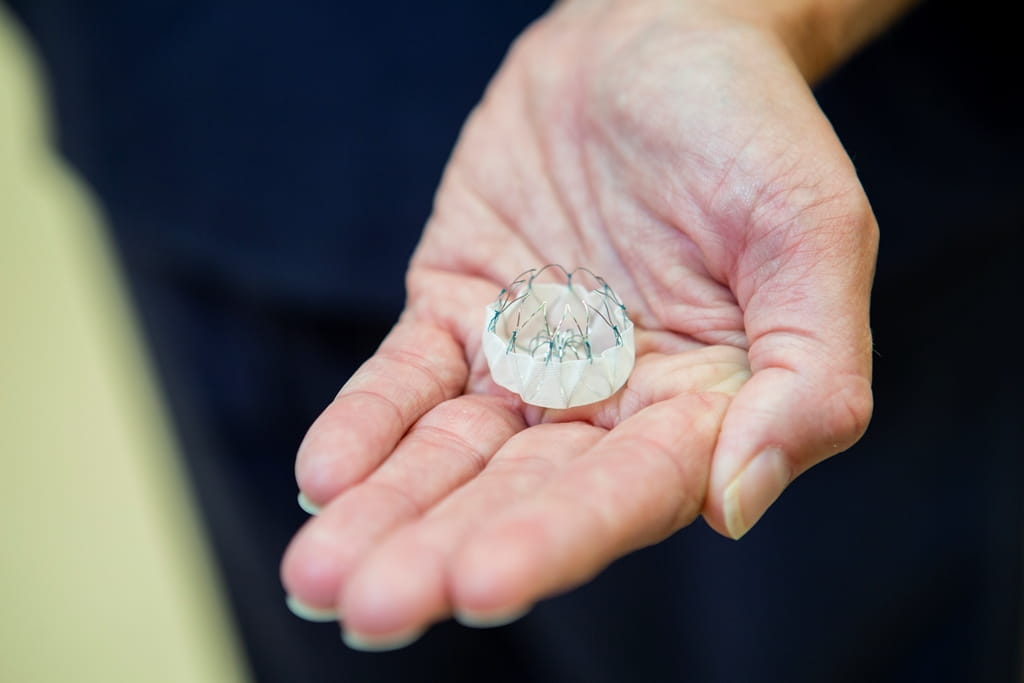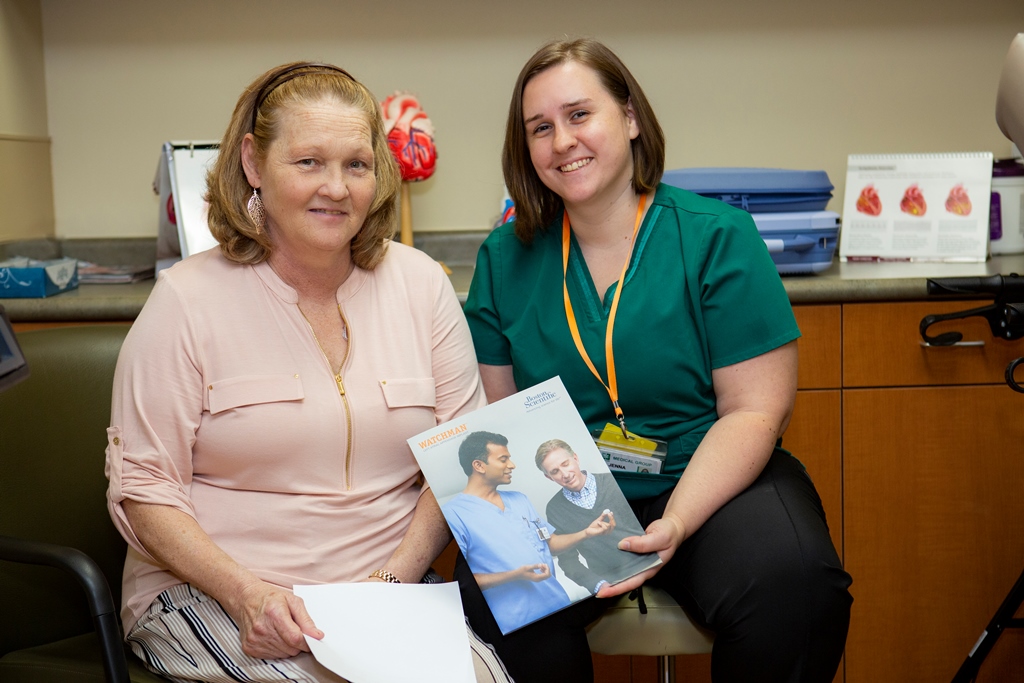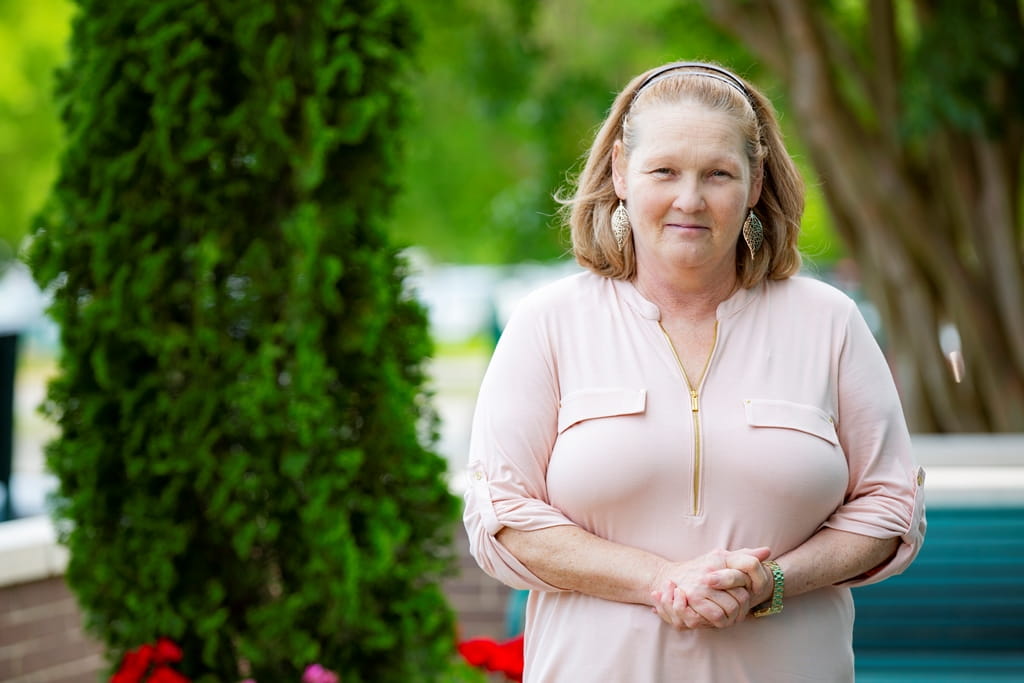Newport News, Va. – A new procedure at Riverside Regional Medical Center now offers patients suffering from atrial fibrillation (AFib) not caused by a heart valve problem another alternative for stroke prevention, Riverside Health announced this week.
Patients with an irregular heartbeat, also called AFib, are five times more likely to develop a blood clot and suffer a stroke than someone with a regular heartbeat. While blood thinning medication can help reduce that risk, some patients are not good candidates for long-term use.
Enter the WATCHMAN™.
The WATCHMAN is a quarter-sized, permanent implant that fits into the left atrial appendage where 90% of stroke-causing blood clots form. The implant is inserted in much the same way as a standard stent. Doctors make a small incision in the upper leg and insert the device through a narrow tube. WATCHMAN works by closing off the left atrial appendage, which prevents blood from clotting and entering the bloodstream.
Cardiac Electrophysiologist Dr. Jamshid Alaeddini began performing the WATCHMAN procedure this spring in Riverside Regional’s brand new Cardiac and Vascular Hybrid Operating Room (OR). The multi-functional OR enables doctors to perform both standard and emergency procedures in one place with the benefit of advanced robotic imaging.
Prior to being offered at Riverside, patients living on the Peninsula would have to travel to Norfolk or Richmond for the WATCHMAN procedure.
“It’s wonderful Riverside can offer this now and that patients don’t have to travel,” said Dr. Alaeddini. “It’s a minimally-invasive procedure and allows patients with atrial fibrillation, who can’t tolerate or aren’t good candidates for anti-coagulants, an alternative therapy.”
Many of the patients in need of the WATCHMAN are older adults or fragile, Dr. Alaeddini said, and could have difficulty traveling long distances to multiple doctors’ appointments in preparation for the procedure.
Nurse Practitioner Kim Liebold and Registered Nurse Jenna Frakes Wood, both with Riverside Cardiology Specialists, work closely with WATCHMAN patients.
Once a patient is identified as a good candidate for the procedure, Frakes Wood guides them through the four to six-week pre-operative process.
“The patients have become like family,” said Frakes Wood. “I’ve seen them through this whole journey.”
Liebold, who has worked at Riverside for more than 30 years, said she’s glad to see patients with a high risk of stroke have more options for care.
“This gives us an opportunity in our community to be able to do this procedure and give them the best chance they can of not having a stroke and not having the bleeding risk,” Liebold said. “There’s a huge amount of people that meet the criteria, and I’m glad we have something to offer them.”
Jeanie Harrop, 55, of Newport News, was the first patient to have the WATCHMAN procedure at Riverside Regional Medical Center.
Harrop, who in addition to having AFib, also suffers from diabetes and a blood pressure disorder, found out she was a candidate for the WATCHMAN procedure earlier this year. After falling and breaking her hip, doctors determined that the long-term use of blood thinners was not a good option for her.
Though she was a little nervous the day of the procedure, Harrop said the team of doctors and nurses supporting her made her feel like she was “surrounded by family.”
During a follow-up visit in June, Harrop said she’s felt much more comfortable walking around now that she has the device.
“It’s kind of like a release,” she said.
WATCHMAN is covered for eligible Medicare patients who meet certain national coverage criteria. It is also covered by a growing number of commercial insurance companies.
